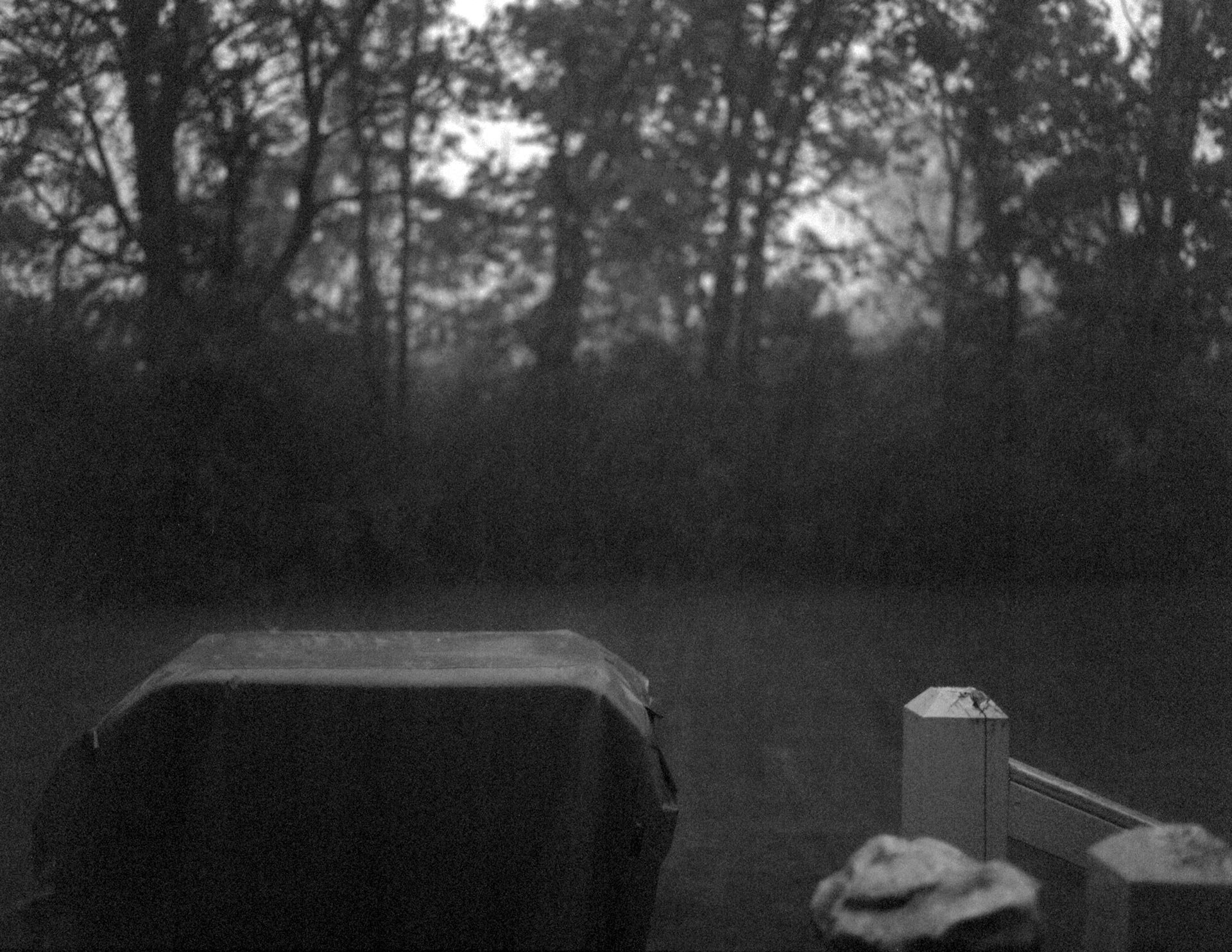By Isaac Hans
Author’s Note: As the Anselm Society heads into a new year, we are creating new structures, more ways to organize and offer our thoughts and ramblings. This is the little corner that I’ve been given to steward (and to ramble about). Each quarter, I’ll highlight a visual artist whose work interacts with what Anselm discusses at large.
“The Creek” from Widowmaker, Isaac Hans (2024)
Once in a critique a painter asked me, “Have you ever thought about the use of light in your images?” I now can appreciate what she was trying to say, but in the moment I was at a loss for words. As a photographer, light is pretty much all I think about. How it hits the subject, what it directs the viewer to engage with, its capacity to enhance or mute colors — all of these things run through my head when I look through the viewfinder.
"Birdhouse" from Widowmaker, Isaac Hans (2024)
The importance of light, in any visual art form, cannot be overstated. Yes, photographers use and manipulate light to create their images, but every other discipline needs to employ it as well. Painters must think about the light within the composition, sculptors must consider how light hits their creation, and any visual artist must consider how a piece will be lit in the gallery. Light is the starting point for an artist.
The first three verses of Genesis tell about the Great Artist and how He created light. Before He created man, before the birds and the trees, even before He separated the water from the land, He said, “Let there be light.” There is beauty in the dichotomy formed between the light and the darkness. There can be no light without darkness, and vice versa (the Lord may prove me wrong on this point on the other side of heaven, but for now, this is a fact). Photography highlights this dichotomy, especially in images that are black and white. Images with high contrast are more visually striking. The darkness only makes the lights appear brighter.
Given that this is a new series to feature Anselm artists, you may be thinking, "You're starting with yourself? A bit vain, don't you think?" I would agree. However, there just might be some benefit to introducing myself and my background before I start waxing poetic about the transcendence found in the color yellow.[1] As most visual artists will tell you, talking about your own work is actually the least enjoyable part of the process. We create when our words fail. For me, this desire to make something beyond where my words can reach, resulted in my project Widowmaker.
“Mom Watching the Storm” from Widowmaker, Isaac Hans (2024)
I made this body of work in a time of great personal distress. It wasn’t something I set out to create; it felt like it had to be made. My body physically needed it — a way of facing and processing emotions. On my father’s 59th birthday, his heart stopped due to a 100 percent blockage in the left ventricle — commonly known as a Widowmaker heart attack. The photos, taken over the three weeks that followed, helped me explore the dualities of my homecoming amidst a crisis. Each image contrasts the familiar landscapes and places around my hometown with the profound emotional upheaval of the moment. They emphasize the paradox of solace found amidst turmoil. Through this lens, I delved into the dynamics of returning home, capturing the resilience and tenderness in relationships with family, childhood friends, and the embrace of nature.
Embedded in the images are concepts of light in the darkness, literal and metaphorical, which were central to the process of making them. During that process, I was also holding on to hope. Creating work like this serves as a personal reminder. Even in the darkness, it is possible to find beauty and light.
Interested in more artists like this? Check out:
Jesse Lenz’s The Seraphim “depicting a world where nature and grace can be witnessed through the prism of small, infinitesimal lives.”
Adra Pallón’s Lumes, a homage to a way of life in Galicia that comes to an end. Now where once small farms and homesteads dotted the Galician mountains, pine forests rage in summer fires that blanket Europe in smoke.
Erinn Springer’s Dormant Season, a tender and knowing portrait of rural life in Wisconsin.
1 Kandinsky, Wassily, Concerning the Spiritual in Art (Dover) 1866-1944, 23-45.
Isaac Hans is a visual artist and photographer based out of Colorado Springs. Influenced by the history of American road trip photography, his work focuses around ideas of longing, spirituality, and the mundane.

















